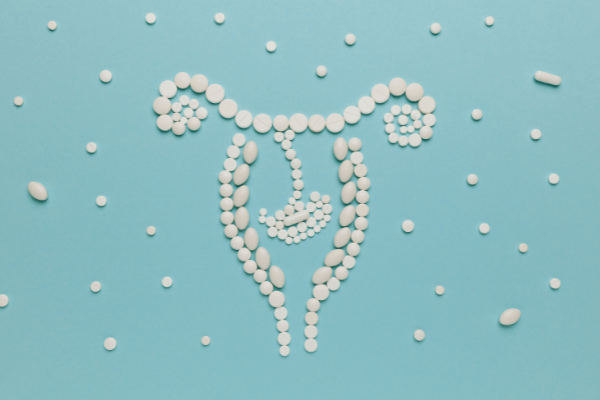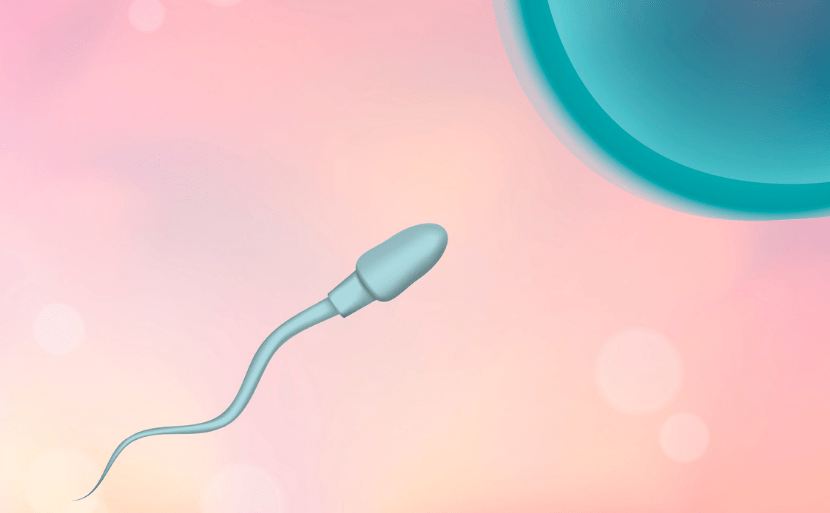Summary of this article
In the very early stages of pregnancy, implantation occurs when the fertilised egg attaches to the endometrium. Implantation occurs around the third week of pregnancy and is usually completed around 12 days after fertilisation. Changes that occur in a woman’s body during implantation include back pain, changes in the amount and nature of discharge, and implantation bleeding. Changes in basal body temperature, absence of menstruation and constipation can also be observed, but should be noted as they vary from person to person. The definitive symptom of pregnancy is the absence of menstruation, and if menstruation does not start after a delay of about a week from the expected start of the period, it is recommended to check with a pregnancy test.
- What is the very early stage of pregnancy?
- What is fertilisation?
- What is implantation?
- What are the definitive symptoms of pregnancy?
- How to distinguish between very early symptoms and menstruation
- Is it true that you can tell from fertilisation to implantation by the state of the discharge?
- Various signs that the body and mind produce in the very early stage of pregnancy
- If you find out you are pregnant
- What to look out for when you find out you are pregnant
- Summary
- FAQs about the very early stage of pregnancy
What is the very early stage of pregnancy?
When is the very early of pregnancy defined? Find out, as well as how it differs from early pregnancy.
Differences between early and very early pregnancy
Early pregnancy is the period up to 13 weeks and 6 days.
Of this period, the period between two and three weeks of pregnancy is sometimes referred to as the very early stages of pregnancy, although this is not a medical or medical terminology. This is the period during which the egg and sperm are fertilised and implantation takes place, but pregnancy cannot be confirmed.

How to count the number of weeks of pregnancy
There are two ways of counting the number of weeks of pregnancy: counting from the day of ovulation, counting from the last menstrual period, or estimating from a hospital ultrasound scan.
How to count from the day of ovulation
The day of ovulation is counted as 2 weeks 0 days of pregnancy.
How to count from the first day of the last menstrual period
The first day of menstruation is counted as 0 weeks 0 days of pregnancy. This method assumes that the menstrual cycle is 28 days, so if the menstrual cycle deviates significantly from 28 days, there will also be a significant deviation in the number of weeks of pregnancy.
Ultrasonography to confirm
As counting from the day of ovulation or from the last menstrual period often results in a discrepancy in the number of weeks of pregnancy, in most cases the fetal cephalic length (length from the tip of the foetus’ head to the hips) is measured by ultrasound at 8-11 weeks of pregnancy to determine the number of weeks of pregnancy and the expected delivery date.
When is the very early stage of pregnancy?
The very early stages of pregnancy refer to the second to third week of pregnancy. The approximate period is from the last menstrual period until pregnancy is established, from fertilisation to implantation. There is no medical/medical terminology for ‘early pregnancy’. However, it is a very important period for the baby’s growth and development, and many women notice changes in their bodies, so it is a time to pay attention.
What is fertilisation?
There are two important key words that describe the very early stages of pregnancy. They are fertilisation and implantation. First, fertilisation is explained in detail.
When is fertilisation due?
Fertilisation occurs at the time of ovulation, about two weeks after the last menstrual period. Fertilisation occurs when a sperm enters an ovulated egg after sexual intercourse with the opposite sex.
Changes that occur in a woman’s body when fertilisation occurs
When do physical changes occur after sexual intercourse? Once fertilisation has taken place, the woman’s body undergoes changes, albeit gradually. It is a small set of symptoms and physical changes that some people do not notice. Knowing these very early pregnancy symptoms can help you recognise the signs of pregnancy earlier and be aware of your physical condition. Here are three typical body changes that are easy to notice after conception, based on clinical research.
Lumbago
After sexual intercourse, back pain is more likely to be felt when fertilisation is established. This is because the endometrium changes under the influence of a change in the balance of female hormones. The endometrium becomes thicker and softer in order for the fertilised egg to implant. Some people feel this change as discomfort or back pain in the lower back. Many people do not notice this change because the symptoms are not very different from those of menstruation.
Headaches
Headaches may be perceived as a result of female hormones altered by fertilisation. Progesterone, one of the female hormones, has the effect of widening blood vessels. When the blood vessels in the brain widen, they stimulate the nerves in the brain, which can cause headaches. The headaches experienced as a result of hormonal imbalance can range from not being as bad as usual to being painful enough to require medication.
Drowsiness
Many women feel drowsy after fertilisation. The balance of female hormones changes and the hormone progesterone increases. Progesterone has the following functions
- Continuing pregnancy
- Raise the temperature
- Intensifies drowsiness
As a result, you are more likely to feel sleepy. If you feel sleepier than usual, even though you’ve had a good night’s sleep, you may be pregnant.

What is implantation?
After fertilisation, the sperm and egg take about one week to ten days to reach the uterus. The fertilised egg reaching the uterus and attaching to the endometrium is called ‘implantation’.
When is implantation due?
Ovulation occurs about two weeks after the last menstrual period. Intercourse takes place at that time and the fertilised egg takes between one week and ten days to implant. The approximate time of implantation is around the third week of pregnancy. If there are no implantation problems, implantation is considered to be complete approximately 12 days after the fertilised egg is formed.
Changes that occur in a woman’s body during implantation
In addition to fertilisation, a woman’s body undergoes many changes during implantation. This section describes the characteristic physical changes that occur during implantation.
Lumbago
Back pain may be experienced not only after fertilisation, but also at the time of implantation. Clinical studies have shown that implantation causes the fertilised egg to develop, which changes the endometrium and may cause back pain.
In addition, implantation releases a hormone called relaxin. Lyraxin is a hormone that helps to soften the pelvic area in preparation for childbirth. Due to the effects of thyraxine, back pain may also be present in the very first trimester of pregnancy. This phenomenon has been confirmed by clinical studies.
Pain at the time of implantation is called implantation pain. Back pain is one of the most common symptoms and is sometimes referred to as implantation back pain. Clinical studies have shown that implantation back pain is a symptom specific to early pregnancy.
Vaginal discharge
The discharge changes in quantity and consistency in accordance with the secretion of the hormone oestrogen. When fertilisation occurs, the amount of oestrogen increases and the volume of the discharge tends to increase. In addition, the nature of the discharge changes during the time of implantation. The reason for this is that implantation changes the vaginal pH. You may notice that the discharge is different from usual, for example, it may be more dry or sticky.
Implantation bleeding
Implantation bleeding is a common symptom that tends to occur after implantation. When the fertilised egg attaches to the endometrium, the endometrium can become damaged. This can cause bleeding for a short period of time, around one or two days.
As only one in four women are aware of implantation bleeding, it may not even be noticed.
Changes in basal body temperature
Those who measure basal body temperature may notice unusual changes in basal body temperature, which may indicate fertilisation and implantation. According to clinical research, changes in basal body temperature are an important indicator of early pregnancy.
Normally, the body temperature drops 3-4 days before menstruation and menstruation occurs. However, if implantation is taking place, the body temperature remains high and menstruation is delayed. If the temperature remains high after the expected start of menstruation, the possibility of pregnancy is high. This change in basal body temperature has been confirmed by clinical studies.
Menstruation is not occurring
The most definitive symptom may be the absence of a period. For those who normally have regular periods, the chances of fertilisation and implantation are very high if the period does not start until about a week later than the expected start of the period. This symptom has been identified in clinical studies as an early sign of pregnancy.
In addition to this, it is important to note that people who have had good bowel movements before their period may be prone to constipation when pregnant, or may experience slight changes in their physical condition, like something out of the ordinary.
What are the definitive symptoms of pregnancy?
As has been explained, a number of symptoms may occur in the very first trimester of pregnancy, including implantation pain and discharge.
On the other hand, some women do not show any particular symptoms. There are no clear criteria such as ‘when to expect these symptoms’ if you are pregnant, so do not worry if you do not have any symptoms.
However, one definite symptom of pregnancy can be the absence of a period.
If your period is about a week later than the expected start of your period, we recommend checking a pregnancy test.
How to distinguish between very early symptoms and menstruation
Among the symptoms that appear in the very first trimester of pregnancy, implantation bleeding is often thought by many to be a sign that the woman may have had her period.
Implantation bleeding is a symptom that occurs in the third or fourth week of pregnancy, around the same time as the expected start of the period.
The following points can help you distinguish between implantation bleeding in the first trimester of pregnancy and a menstrual period. Please refer to the following.
| Implantation bleeding | Menstruation | |
|---|---|---|
| Number of days | 1-2 days | Several days to one week |
| Colour | Light pink, brown blood, bright red | Red to dark red |
| Quantity | Small quantity | 30 ml per day, about 2 tbsp |
| Other features | Mixed in with the discharge | Blood clots may occur |
Is it true that you can tell from fertilisation to implantation by the state of the discharge?
In very early pregnancy, female hormones change. This can result in increased discharge and changes in the colour and odour of the discharge. This section describes the characteristic discharge conditions seen from fertilisation to implantation.
Amount of discharge
Even people who do not normally produce a discharge may have one. However, there is a great deal of individual variation, and some people find that the amount remains the same or even decreases.
Colour of the discharge
In the very first trimester of pregnancy, the discharge may become more watery and silky than usual, or the colour that was translucent may change to milky or yellowish. The colour of the discharge also varies from person to person, so some people are not aware of any changes.
Smelling of discharge
It may also have a sour odour. However, this change varies from person to person, and some people say that the amount of discharge has remained the same or decreased after pregnancy, and that the condition has also become rather sticky.
Various signs that the body and mind produce in the very early stage of pregnancy
In the very early stages of pregnancy, a number of signs appear in the body and mind. Many of these symptoms are similar to pre-menstrual syndrome (PMS). Here is a brief summary of the different signs you may experience in the first trimester of pregnancy. ‘Could I be pregnant?’ Check for these symptoms if you think you might be pregnant.
- Increased amount of discharge, change in colour
- Very small amounts of bleeding
- Pain in the lower abdomen, abdominal cramps
- Feeling drowsy, sudden sleepiness
- Loss of appetite, excessive appetite
- Sensitive to smells
- Feeling dizzy or light-headed
- Feeling feverish, burning sensation
- Unexplained irritability, depressed mood
- Tendency to constipation
- Breast tenderness, nipple tingling
If you find out you are pregnant
Visit a hospital
If you use a pregnancy test and get a positive result when your menstruation is a week late, wait another week or so from that point and see a doctor when your menstruation is two weeks late. If your menstruation is a 28-day cycle, you are six weeks from the day your last menstruation started (week 6 of pregnancy).
Submit a Pregnancy Notification Form and receive a Maternal and Child Health Handbook
The timing varies depending on the hospital you visit, but in many cases, a pregnancy notification form is issued when the baby’s heartbeat can be confirmed. When you submit the pregnancy notification form to the local authority, you will receive a Maternal and Child Health Handbook.
The Maternal and Child Health Handbook is to be used for future antenatal check-ups and to record the progress of your pregnancy, so make sure you get it before your first antenatal check-up.
Consider NIPT
As soon as the pregnancy is confirmed by an ultrasound, a NIPT can be performed, which estimates the amount of foetal DNA in the mother’s blood to determine if the foetus has Down syndrome (21 trisomy), Edwards syndrome (18 trisomy), Patau syndrome and other chromosomal abnormalities.
Although it is a non-confirmatory test, it is more accurate than conventional prenatal diagnosis using maternal blood, with a sensitivity and specificity of 99.9%. It is also referred to as non-invasive prenatal genetic testing and does not involve risks such as miscarriage, as the test can be performed using only a blood sample.
NIPT is recommended at 10-15 weeks’ gestation. It is advisable to be knowledgeable about it at an early stage, such as before pregnancy, and to consider it as soon as you find out you are pregnant.
What to look out for when you find out you are pregnant
Lifestyle
Once you know you are pregnant, avoid smoking and drinking alcohol, which may affect the foetus.
Coffee and other caffeinated drinks are also known to be bad if consumed in excess. Be careful not to consume too much and limit yourself to one or two cups a day.
If you are taking any medication for a pre-existing medical condition, see your doctor immediately to check if you can continue taking it during pregnancy.
Also, try to avoid stress during pregnancy for the sake of your baby. You should not let your guard down too much, but you should not be too nervous and find time to relax and enjoy your pregnancy without putting too much strain on your mind and body.
Threatened miscarriage
A condition in which the foetus remains in the uterus and is one step away from miscarriage is called an imminent miscarriage. Rest has been reported to be effective in cases of an imminent miscarriage where there is a blood clot (subchorionic haematoma) in the uterus. If you are diagnosed with an imminent miscarriage, follow your doctor’s instructions and rest.
Summary
The various signs felt in the very early stages of pregnancy can be so mild that some people say they did not feel them at all.
Sometimes people assume they are not pregnant because they have no symptoms, and realise they are pregnant long after their period is due. If your period is late, or if you are feeling somewhat less well than usual, check with a pregnancy test.
Finding out about the pregnancy at the right time allows for planned NIPT and amniotic fluid tests to be carried out. A planned NIPT or amnio test is easier on both the mother and the baby.
If you are thinking of having a NIPT when you become pregnant, please consider visiting Hiro Clinic NIPT, where the test can be performed as soon as the pregnancy is confirmed by an ultrasound scan.
Hiro Clinic can help you undergo testing with peace of mind, with up-to-date information and after-sales support based on clinical research.
(Hiro Clinic uses the data as clinical research data after obtaining the client’s consent.)
【References】
- Japan Society of Obstetrics and Gynaecology – Miscarriage and imminent miscarriage
Q&A
FAQs about the very first trimester of pregnancy are listed below. Please refer to.
-
QCan a pregnancy test confirm a pregnancy in the very early stages of pregnancy?Commonly available pregnancy tests are the type that can be used from one week after the expected start of menstruation. Other early pregnancy tests sold at dispensing pharmacies where pharmacists are available can be used from the expected day of menstruation.
. However, even if you use an early pregnancy test, a positive pregnancy test will not be produced until four weeks after conception, so in most cases you will not get a positive test in the very first trimester of pregnancy. Wait until you are ready to test before doing so. -
QShould I see a doctor as soon as I find out I am pregnant?If you visit a hospital too early, you may not be able to confirm the foetal sac and the baby's heartbeat and have to visit again at a later date, so once you know you are pregnant by symptoms or a pregnancy test, it is recommended to visit an obstetrician at the end of the fifth to sixth week after your last period has started.
. If you are considering a NIPT or amniotic fluid test after pregnancy, you should also check with a pregnancy test at the appropriate time to avoid missing the appropriate timing of the test.
Article Editorial Supervisor

岡 博史先生
【役職】
【資格】
【略歴】
【所属】
【SNS】
 中文
中文












